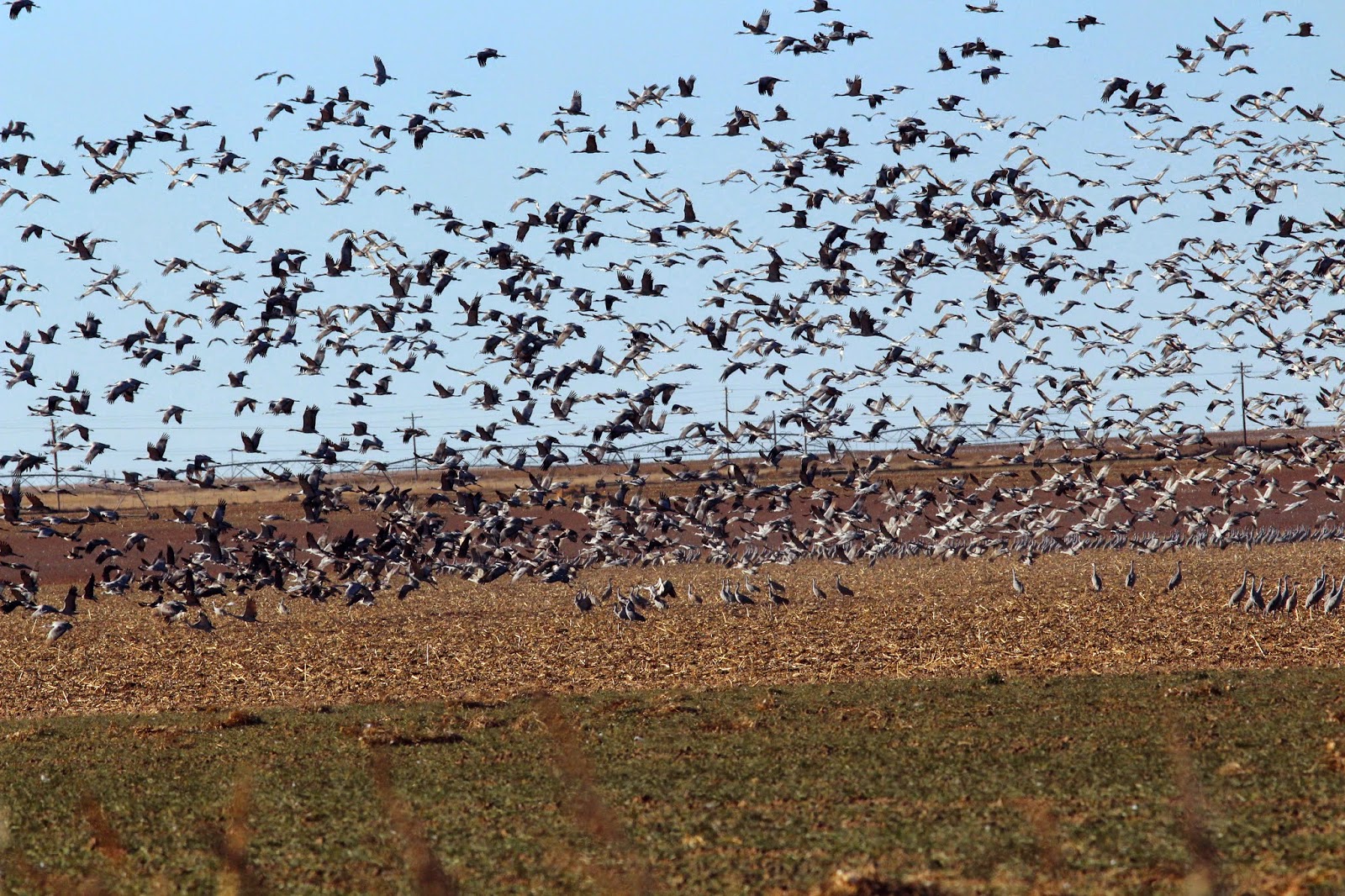This recent cool weather has got me out looking for birds and I'm really enjoying it. I started this morning at the Sal del Rey unit of the Lower Rio Grande Valley NWR. We have water in the salt lake for the first time in several winters. Good stuff today included twenty Snowy Plovers.
I counted 75 Wilson' Phalaropes bouncing in the rough water. A count of the individuals in this flight shot reveals there were actually 85 of them. Hope they stay for the winter.
I also had fifty Western Sandpipers which is a bit high. Here are a couple to compare with Least Sandpipers. Notice the grayer color and the white face of the Westerns. Unfortunately the cloudy weather messed up some good photos.
On the way out this White-eyed Vireo was not pleased with my pygmy owl imitations.
Birds were also plentiful at Delta Lake County Park north of Monte Alto. The water is down on the west side of FM 88 creating some great mudflats with lots of shorebirds. I counted and estimated about 500 or them.
Best was this distant Dunlin, my first for Hidalgo County this year.
My new scope is really good and I'm enjoying it but my digiscoping still sucks. This shot with Laughing, Franklin's and Ring-billed Gulls was shot with way too high of an ISO.
Inside the picnic area there were a few passerines but this Vermillion Flycatcher stole the show. It posed while I was inside the car so I got some good shots.
Here are the lists for today.
LRGV NWR--La Sal del Rey (LTC 005), Hidalgo, US-TX
Nov 18, 2014 8:50 AM - 11:10 AM
Protocol: Traveling
1.0 mile(s)
Comments: Walked in from Brushline Road.
41 species
Greater White-fronted Goose 22
Northern Shoveler 1
Lesser Scaup 2
Eared Grebe 75
Turkey Vulture 2
Harris's Hawk 1
Red-shouldered Hawk 1
American Coot 3
Sandhill Crane 11
Black-necked Stilt 30
American Avocet 15
Snowy Plover 20
Greater Yellowlegs 2
Lesser Yellowlegs 7
Least Sandpiper 130
Western Sandpiper 50
Wilson's Phalarope 85
Laughing Gull 80
Common Ground-Dove 1
Mourning Dove 1
Yellow-bellied Sapsucker 1
Ladder-backed Woodpecker 3
Crested Caracara 3
Eastern Phoebe 2
Great Kiskadee 1
White-eyed Vireo 1
Green Jay 1
Black-crested Titmouse 2
Verdin 1
House Wren 7
Bewick's Wren 2
Blue-gray Gnatcatcher 3
Ruby-crowned Kinglet 1
Northern Mockingbird 1
American Pipit 4
Orange-crowned Warbler 2
Nashville Warbler 2
Olive Sparrow 1
Lark Sparrow 3
Savannah Sparrow 5
Lincoln's Sparrow 7
Delta Lake (LTC 008), Hidalgo, US-TX
Nov 18, 2014 12:00 PM - 1:30 PM
Protocol: Traveling
1.5 mile(s)
39 species
Mottled Duck 1
Northern Pintail 1
Neotropic Cormorant 100
Double-crested Cormorant 50
American White Pelican 270
Great Blue Heron 3
Great Egret 2
Snowy Egret 3
Turkey Vulture 25
American Avocet 3
Killdeer 54
Greater Yellowlegs 5
Lesser Yellowlegs 2
Stilt Sandpiper 100
Dunlin 1
Least Sandpiper 200
Western Sandpiper 1
Long-billed Dowitcher 100
Laughing Gull 12
Franklin's Gull 6
Ring-billed Gull 6
Caspian Tern 1
Belted Kingfisher 1
Golden-fronted Woodpecker 1
Ladder-backed Woodpecker 1
American Kestrel 2
Eastern Phoebe 2
Vermilion Flycatcher 2
Loggerhead Shrike 1
Tree Swallow 50
Barn Swallow 20
Marsh Wren 2
Blue-gray Gnatcatcher 1
Ruby-crowned Kinglet 1
European Starling 4
Orange-crowned Warbler 2
Nashville Warbler 1
Common Yellowthroat 2
Great-tailed Grackle 5
































